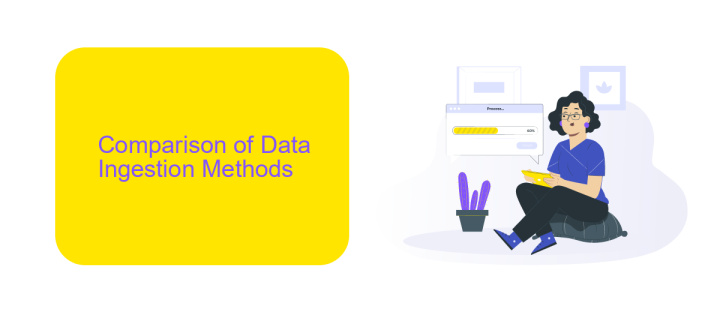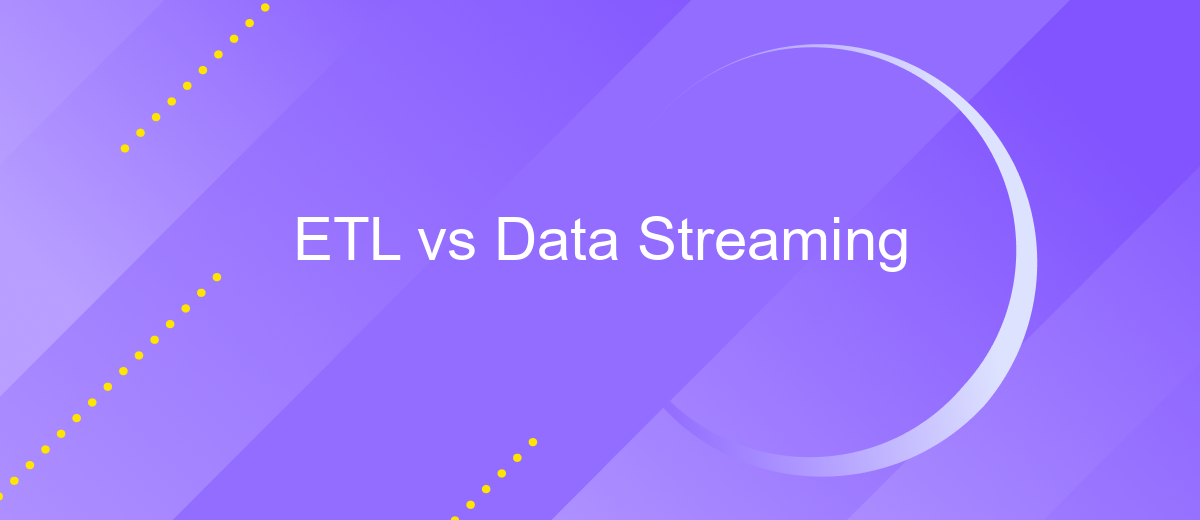ETL vs Data Streaming
In today's data-driven world, businesses are constantly seeking efficient ways to process and analyze vast amounts of information. ETL (Extract, Transform, Load) and data streaming are two pivotal methodologies for handling data. This article delves into the key differences, advantages, and use cases of ETL versus data streaming, helping you to determine which approach best suits your organization's needs.
Introduction
In the evolving landscape of data management, businesses face the challenge of choosing the right approach to handle their data efficiently. Two prominent methods are ETL (Extract, Transform, Load) and Data Streaming. Each has its own strengths and weaknesses, making it crucial to understand their differences and applications.
- ETL: A traditional method involving the extraction of data from various sources, transforming it into a suitable format, and loading it into a data warehouse.
- Data Streaming: A real-time data processing technique that allows continuous input, processing, and output of data, often used for time-sensitive applications.
While ETL is well-suited for batch processing and structured data, Data Streaming excels in scenarios requiring real-time analytics and quick decision-making. Services like ApiX-Drive can streamline the integration process, making it easier for businesses to implement and manage these data workflows effectively. Understanding the nuances of both approaches can help organizations optimize their data strategies for better performance and scalability.
Comparison of Data Ingestion Methods

ETL (Extract, Transform, Load) and Data Streaming are two distinct methods for data ingestion, each with its own strengths and use cases. ETL is a traditional approach where data is extracted from various sources, transformed into a suitable format, and then loaded into a data warehouse or database for analysis. This method is ideal for batch processing and scenarios where data consistency and integrity are critical. ETL processes can be scheduled to run at specific intervals, making them suitable for situations where real-time data is not a necessity.
On the other hand, Data Streaming involves the continuous flow of data from sources to destinations in real-time. This method is essential for applications that require immediate data processing and analysis, such as monitoring systems, financial transactions, and IoT devices. Data Streaming allows for low-latency data ingestion, providing up-to-the-minute insights. Services like ApiX-Drive can facilitate the integration of streaming data by connecting various APIs and automating data flows, ensuring seamless and real-time data updates across platforms. The choice between ETL and Data Streaming ultimately depends on the specific requirements of the data ingestion task at hand.
Latency vs. Throughput

When comparing ETL and data streaming, it's essential to understand the differences between latency and throughput. Latency refers to the time it takes for data to travel from the source to the destination, while throughput measures the volume of data processed within a given time frame.
- ETL processes typically have higher latency due to batch processing, which collects data over a period before processing it.
- Data streaming, on the other hand, is designed for low latency, processing data in real-time as it flows from the source to the destination.
- Throughput in ETL can be high, but it is limited by the frequency of batch processing cycles.
- Data streaming provides consistent throughput, handling continuous data flows efficiently.
Choosing between ETL and data streaming depends on your specific requirements. If real-time data processing and low latency are crucial, data streaming is the better option. For scenarios where high throughput and periodic data processing are sufficient, ETL might be more appropriate. Tools like ApiX-Drive can help streamline these integrations, ensuring optimal performance based on your needs.
Data Processing

Data processing plays a crucial role in transforming raw data into meaningful insights. In the context of ETL (Extract, Transform, Load) and data streaming, the approach to data processing can vary significantly. ETL processes involve extracting data from various sources, transforming it into a suitable format, and loading it into a data warehouse or database. This method is typically batch-oriented, meaning data is processed in large volumes at scheduled intervals.
On the other hand, data streaming focuses on real-time data processing. This approach allows for continuous ingestion and transformation of data as it arrives, enabling immediate analysis and action. Data streaming is essential for applications requiring real-time insights, such as monitoring systems, financial trading platforms, and IoT devices.
- ETL: Batch processing, suitable for historical data analysis.
- Data Streaming: Real-time processing, ideal for immediate insights.
- ETL: Often involves complex transformations and data cleaning.
- Data Streaming: Requires scalable and low-latency infrastructure.
Integrating ETL and data streaming can be challenging, but tools like ApiX-Drive can simplify the process. ApiX-Drive offers seamless integration between various data sources and destinations, allowing for both batch and real-time data processing. By leveraging such services, businesses can ensure their data workflows are efficient and responsive to their needs.


Use Cases
ETL processes are ideal for batch processing tasks such as data warehousing, where large volumes of data need to be extracted, transformed, and loaded at scheduled intervals. This method is highly effective for historical data analysis and reporting, enabling businesses to make informed decisions based on comprehensive datasets. For instance, financial institutions often rely on ETL to consolidate data from various sources into a single repository for regulatory compliance and risk management.
On the other hand, data streaming is suited for real-time analytics and applications requiring immediate data processing, such as fraud detection, live monitoring, and personalized recommendations. Streaming platforms like Apache Kafka allow continuous data flow, making them essential for dynamic environments. Additionally, services like ApiX-Drive facilitate seamless integration between different applications and data streams, ensuring that businesses can quickly adapt to changing data landscapes. This capability is particularly valuable for e-commerce platforms that need to update inventory and customer data in real-time to enhance user experience.
FAQ
What is the main difference between ETL and Data Streaming?
When should I use ETL over Data Streaming?
What are the benefits of Data Streaming?
Can ETL and Data Streaming be used together?
How can I automate and integrate ETL and Data Streaming processes?
Strive to take your business to the next level, achieve your goals faster and more efficiently? Apix-Drive is your reliable assistant for these tasks. An online service and application connector will help you automate key business processes and get rid of the routine. You and your employees will free up time for important core tasks. Try Apix-Drive features for free to see the effectiveness of the online connector for yourself.

